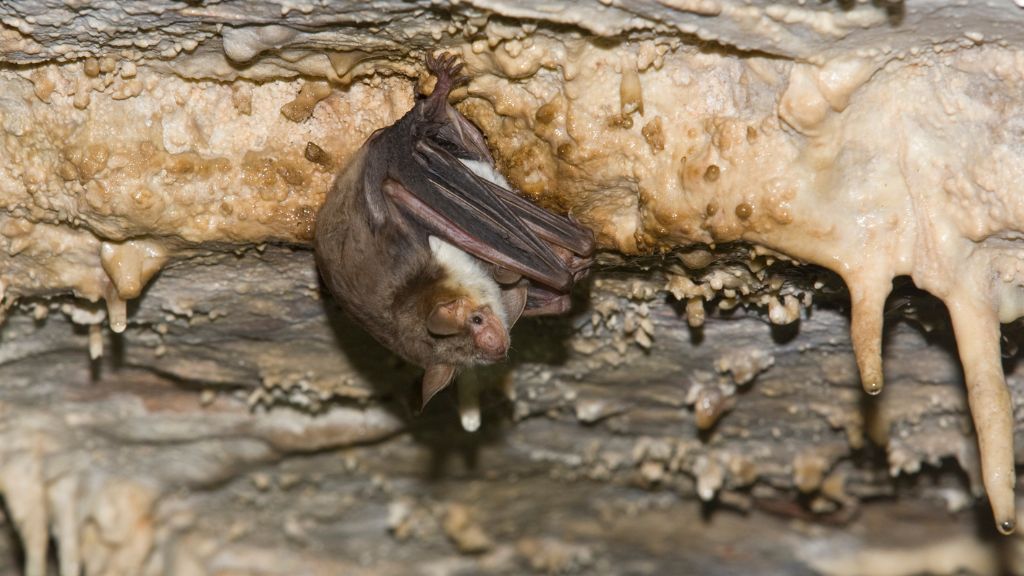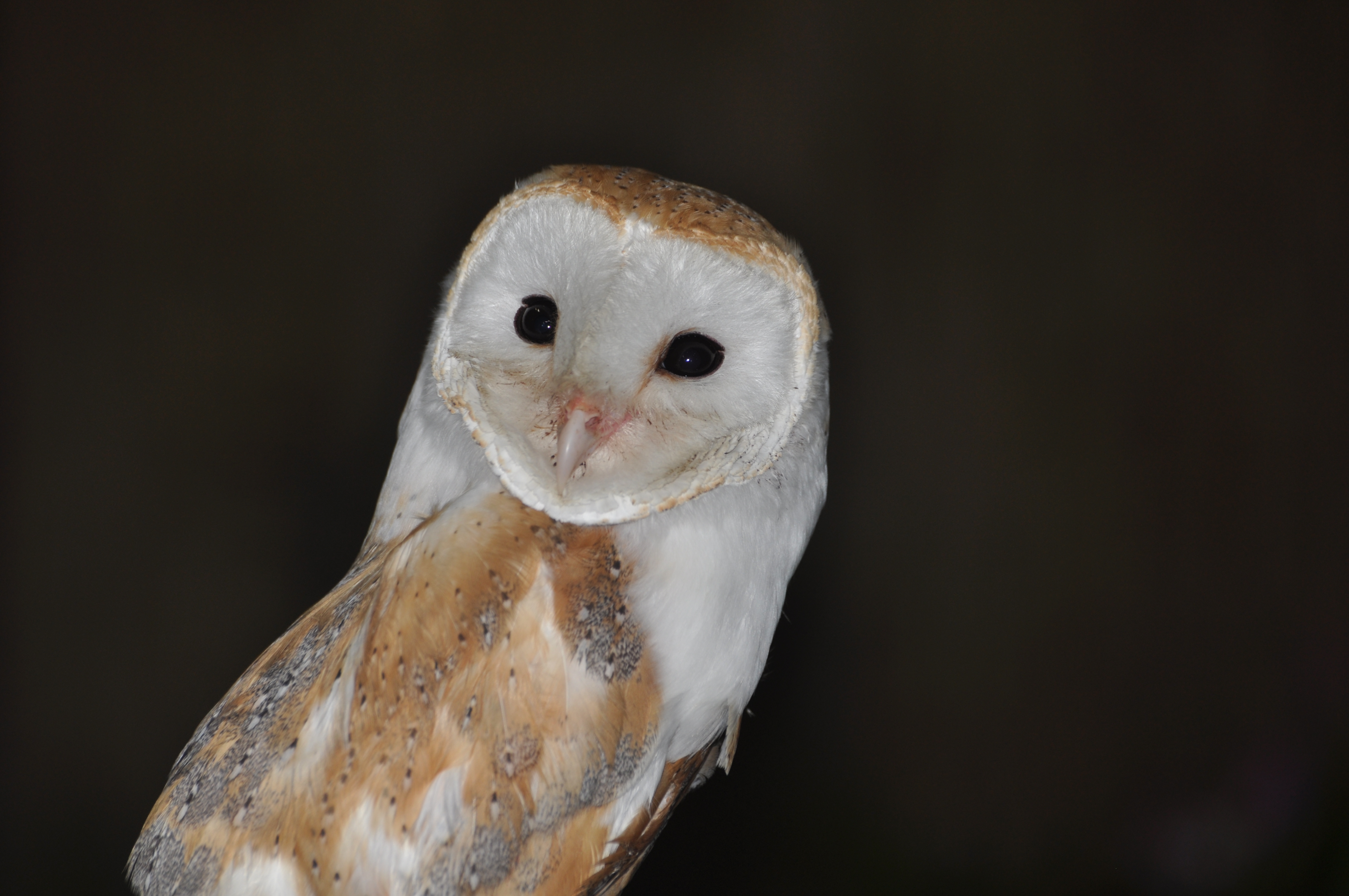Bats tell predators to 'buzz off' — literally
Owls react the same to bat and hornet buzzes.

To avoid being snagged in the talons of a ravenous owl, the greater mouse-eared bat (Myotis myotis) mimics the intense buzz of an angry hornet and thus scares off its potential predators.
This is the first known example of a mammal (in this case, a bat) mimicking an insect (a stinging hornet) to gain protection from a predator (owls). And "to my best knowledge, ours is the first documented case of acoustic mimicry in a mammal," meaning the bats emulate the sounds made by stinging insects, rather than mimicking aspects of their appearance, said Danilo Russo, senior author of the study and a professor of ecology at the Università degli Studi di Napoli Federico II (UNINA) in Portici, Italy.
Imitating scarier animals is a defensive strategy seen in a variety of animals, such as an Amazonian bird called the cinereous mourner (Laniocera hypopyrra), whose chicks visually resemble big, hairy, toxic caterpillars commonly found in the forest, according to research published in 2015 in the journal The American Naturalist. Similarly, the milkweed tiger moth (Euchates egle) imitates the distinct, ultrasonic sounds produced by the dogbane tiger moth (Cycnia tenera), a toxic species, in order to ward off hungry bats, researchers reported in the journal Proceedings of the National Academy of Sciences.
The new research hints that other bat species, in addition to M. myotis, likely use similar tactics to deter predators, said Mirjam Knörnschild, a senior scientist at the Museum for Natural History in Berlin, Germany, who was not involved in the study. "It makes total sense to me that bats, with their remarkable vocal abilities and sophisticated control over their vocalizations, resort to acoustic means to fool predators," she told Live Science in an email.
Related: In photos: The eerily beautiful bats of Arizona
Russo first heard the distinctive buzz of greater mouse-eared bats while completing his doctoral degree. While in Lazio, a region of central Italy, he'd captured the bats in soft mesh traps, called mist nets, and "noticed that when we took the bats out of the net or handled the bats to process them, they buzzed like wasps or hornets," Russo told Live Science in an email.
Russo suspected that the animals might be imitating wasps as a way to avoid predation. To test this hypothesis, he assembled a research group led by Leonardo Ancillotto, first author of the study and a postdoctoral scholar at UNINA and set out to take recordings from the buzzy bats.
Sign up for the Live Science daily newsletter now
Get the world’s most fascinating discoveries delivered straight to your inbox.
The team compared the acoustic qualities of the bats' buzzes with those of several stinging insects, including European hornets (Vespa crabro) and Western honeybees (Apis mellifera) and found that all the animals produced highly-repetitive, pulsed buzzes when handled by researchers. In their analyses, the team took owls' hearing range into account and found that, within that range, the hornets' buzzes appeared remarkably similar to those produced by bothered bats.

The team then recorded all these sounds and played them back to barn owls (Tyto alba) and tawny owls (Strix aluco); they also played a non-buzzing bat sound to the owls, as a point of comparison. Half of the owls had been raised in captivity, and therefore they hadn't been exposed to buzzing wasps before, and the other half grew up in the wild where they would have heard the insects.
Related: 2 lemon-yellow bat species discovered in Africa. And they're adorable fuzz balls.
Interestingly, all the owls consistently reacted to the bat and insect buzzes in a similar way, by promptly moving away from the speaker. This finding hints that "avoidance of buzzing animals is hardwired in the owl’s behavioral repertoire," Russo said. However, compared with the captive owls, the wild owls retreated from the buzzes more often, suggesting that "experience is needed as a reinforcement," he said.
On the flipside, the owls tended to move toward the speaker in response to the non-buzzing bat sounds, as would be expected from predators listening out for potential prey.
"I think that the authors provide strong evidence suggesting that the predators respond similarly, showing aversion from both Myotis buzzes and bees [and] wasps," said Yossi Yovel, a professor of zoology and head of the Sagol School of Neuroscience at Tel Aviv University in Israel. "It is, however, very difficult to determine if evolutionarily a signal has evolved through mimicry," he told Live Science in an email.
In the future, Yovel said he'd be interested in seeing similar studies replicated with larger numbers of owls and with different bat species, with analyses addressing "whether there is a correlation between the bats' distress calls and their prevalence in owls' diets."
The research team does hope to study this kind of mimicry in other bat species, as well as in other vertebrates, Russo told Live Science.
"Several other European members of the genus Myotis also produce pulsed distress calls, so they would be good candidates to test if this phenomenon is more widespread than we currently know," Knörnschild said. In addition, "it would be super interesting to test whether wasp-eating birds of prey" — such as the red-throated caracara (Ibycter americanus) — "react differently to the bats' buzzes than the owls tested in this study," she said.
The findings were published Monday (May 9) in the journal Current Biology.
Originally published on Live Science.

Nicoletta Lanese is the health channel editor at Live Science and was previously a news editor and staff writer at the site. She holds a graduate certificate in science communication from UC Santa Cruz and degrees in neuroscience and dance from the University of Florida. Her work has appeared in The Scientist, Science News, the Mercury News, Mongabay and Stanford Medicine Magazine, among other outlets. Based in NYC, she also remains heavily involved in dance and performs in local choreographers' work.









